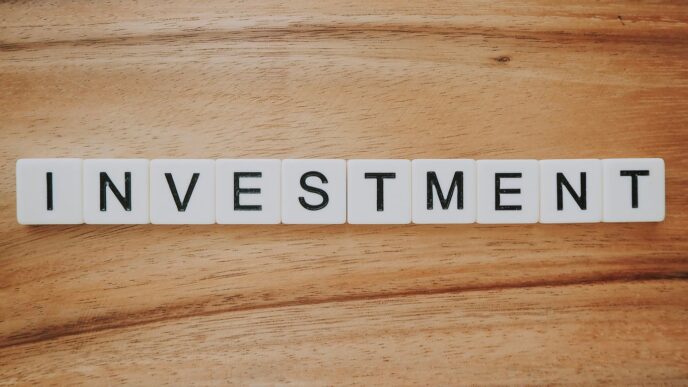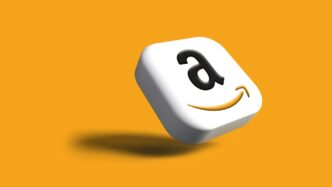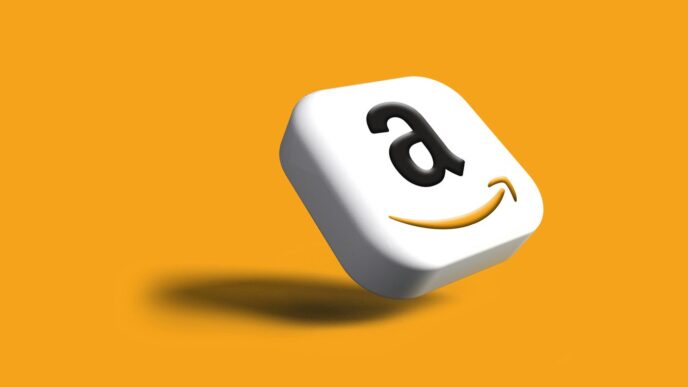Thinking about starting or growing your small business? The Small Business Administration (SBA) has a lot of resources, and a big part of accessing them is through their online portal. This guide is all about the sba login portal, breaking down how to get into your account and what you can do once you’re there. We’ll cover everything from loans and grants to government contracts and keeping your business info up to date. Let’s get started.
Key Takeaways
- The sba login portal is your main entry point for managing SBA loans, grants, and government contracting opportunities.
- Use the MySBA Loan Portal for disaster loans, PPP loans, 7(a) loans, and 504 loans, including making payments and viewing documents.
- Register on SAM.gov to find federal contract opportunities and apply for SBA certifications like 8(a) Business Development or HUBZone.
- Update your business profile using the Small Business Search (SBS) tool, formerly known as Dynamic Small Business Search.
- Contact the SBA Answer Desk or find local SBA partners for help with any questions or support you might need.
Navigating the SBA Login Portal
Getting into your Small Business Administration (SBA) account might seem a little confusing at first, but it’s really just about knowing where to go. Think of the SBA login portal as your main hub for all things related to your business and the SBA. This is where you’ll access most of the services and information you need.
Accessing Your SBA Account
To get started, you’ll typically need to create an account or log in with your existing credentials. The specific portal you use depends on what you’re trying to do. For instance, if you’re managing an SBA loan, you’ll likely use a different section than if you’re looking for government contracting opportunities. It’s a good idea to bookmark the main SBA website so you can easily find your way back.
Here’s a quick rundown of common access points:
- Loan Management: For borrowers, the MySBA Loan Portal is where you can check balances, make payments, and view loan documents for various SBA loan types. If you’re dealing with PPP loans and your lender participates in direct forgiveness, there’s a separate portal for that.
- Contracting: If your business wants to work with the federal government, you’ll need to register on SAM.gov. This is also where you’ll apply for SBA certifications that can help you secure government contracts.
- Business Profile: Keeping your business information up-to-date is important. The Small Business Search platform is where you can create or update your business profile, making it visible to potential partners and government agencies.
Understanding SBA Portal Functions
The SBA offers a variety of online tools, and each serves a specific purpose. It’s not just one big login for everything, which can be a bit of a learning curve. You might find yourself using different portals for different needs.
Here are some of the key functions you’ll encounter:
- Loan Servicing: Beyond just applying for loans, these portals allow you to manage existing ones. This includes making payments, tracking your loan status, and accessing important documents. For example, you can manage payments for many SBA loans through the MySBA Loan Portal.
- Grant Applications: For specific grant programs, like the Shuttered Venue Operators Grant (SVOG) or the Restaurant Revitalization Fund (RRF), there are dedicated application portals. These are usually set up for specific application periods.
- Certifications and Registrations: Applying for SBA certifications (like 8(a) Business Development or HUBZone) or registering for government contracting (SAM.gov) are separate processes with their own online interfaces.
Knowing which portal to use for which task will save you a lot of time and frustration. If you’re ever unsure, the SBA website usually has clear instructions or links to the correct resources.
Managing SBA Loans and Grants
When it comes to getting financial help for your small business, the Small Business Administration (SBA) has several portals designed to make things easier. Whether you’re looking to manage an existing loan, apply for new funding, or get help with specific grant programs, knowing where to go is key.
MySBA Loan Portal for Borrowers
This is your go-to spot for most SBA-backed loans. If you’ve taken out a disaster loan, including those related to COVID-19, or certain other SBA loans like 7(a) or 504, you can manage them here. The MySBA Loan Portal lets you make payments and view important loan documents. For loans that have been purchased by the SBA’s guaranty, you can handle payments for PPP loans and SBA-serviced 7(a) loans. If your loan isn’t managed through this portal, you might need to use Pay.gov for online payments.
Direct Forgiveness for PPP Loans
If you received a Paycheck Protection Program (PPP) loan and your lender is part of the direct forgiveness program, this portal is where you’ll apply to have your loan forgiven. It’s a streamlined process for those eligible. However, if your lender doesn’t participate in direct forgiveness, you’ll need to reach out to them directly for instructions on how to apply for forgiveness. It’s always best to check with your specific lender first.
Shuttered Venue Operators Grant Portal
This portal was set up for businesses in the live entertainment, theater, and museum industries that were hit hard by the pandemic. It’s where eligible applicants could apply for grants to help cover expenses. The application period for this grant has closed, but the portal remains a reference point for those who received funding.
Restaurant Revitalization Fund Application Portal
Similar to the Shuttered Venue Operators Grant, the Restaurant Revitalization Fund (RRF) was created to help restaurants and other food service businesses that suffered losses due to the pandemic. This portal was used for applications. Like the SVOG, the application window for the RRF has now passed, but it was a significant program for many businesses in the food service industry.
Engaging in Government Contracting

So, you’ve got a small business and you’re thinking about doing some work with the federal government? That’s a big step, and the SBA has some tools to help you get started. It’s not always straightforward, but understanding the process can open up a lot of doors.
Registering for SAM.gov
First things first, if you want to even look at federal contract opportunities, you absolutely need to get registered in the System for Award Management, or SAM.gov. Think of it as the main directory where the government lists vendors they’re willing to do business with. It’s where everything happens, so getting your business profile set up correctly here is pretty important. You’ll need to provide details about your business, its structure, and what you do. Without this registration, you’re basically invisible to federal contracting officers.
Applying for SBA Certifications
Beyond just registering, the SBA offers several special certifications that can give your business an edge when bidding on government contracts. These programs are designed to help certain types of small businesses compete more effectively. Some of the main ones include:
- 8(a) Business Development Program: This helps small, disadvantaged businesses compete in the federal marketplace.
- HUBZone Program: For businesses located in historically underutilized business zones.
- Veteran-Owned Small Business (VOSB) and Service-Disabled Veteran-Owned Small Business (SDVOSB) Programs: For businesses owned by veterans.
- Women-Owned Small Business (WOSB) and Economically Disadvantaged Women-Owned Small Business (EDWOSB) Programs: For businesses owned by women.
Applying for these certifications usually happens through the SBA’s certification portal. It’s a separate process from SAM.gov, so make sure you tackle both if you’re aiming for these specific opportunities.
Accessing Contracting Opportunities
Once you’re registered in SAM.gov and potentially have an SBA certification, you can start looking for actual contract work. SAM.gov isn’t just for registration; it’s also a place where agencies post their needs. You can search for opportunities based on keywords, location, agency, and contract type. It takes some digging, and you’ll want to get familiar with how to read the solicitations, but this is where the real work can be found. The SBA also has resources to help you understand how to find and bid on these contracts, often through their local partners or online guides.
Updating Your Business Profile
Keeping your business information current with the Small Business Administration (SBA) is pretty important, especially if you’re looking to access loans, grants, or government contracts. Think of it as your business’s official record with the SBA.
The SBA’s Small Business Search (SBS) platform is where you’ll manage this information. It used to be called the Dynamic Small Business Search, but they’ve updated it. All your existing business details should have moved over to the new SBS system. If you’re starting from scratch or need to make changes, here’s what you generally need to do:
- Log In: Access your SBA account. This is usually the same login you use for other SBA services.
- Find Your Profile: Look for the section related to your business profile or company information. On the SBS platform, you can search for your business to find its current listing.
- Edit Information: Update any details that have changed. This could include your business address, contact information, services offered, or certifications.
- Save Changes: Make sure to save everything when you’re done. It sounds obvious, but sometimes people forget this step!
It’s a good idea to check your profile periodically, maybe once or twice a year, just to make sure everything is still accurate. This helps the SBA and potential government partners find you and understand what your business does. If you run into any trouble updating your profile, the SBS Help guide is usually the first place to look for step-by-step instructions. They’ve put together resources to make the process clearer.
Seeking Assistance and Support
Sometimes, even with the best guides, you might hit a snag. That’s totally normal when dealing with government portals and business applications. The Small Business Administration (SBA) knows this, and they’ve set up a few ways to help you out when you need it.
Contacting the SBA Answer Desk
If you have general questions about SBA programs, loans, or need help figuring out where to go next, the SBA Answer Desk is your first stop. They are there to point you in the right direction. You can reach them by phone or email. It’s a good idea to have your business details handy when you call, just in case they need them to help you better.
- Phone: 1-800-827-5722
- Email: answerdesk@sba.gov
Finding Local SBA Partners
Beyond the main SBA offices, there’s a whole network of local partners ready to offer free or low-cost help. These folks are often embedded in your community and understand the local business landscape. They can assist with things like:
- Business planning and strategy
- Finding funding options
- Government contracting advice
- Training and workshops
These partners include Small Business Development Centers (SBDCs), SCORE mentors, and Women’s Business Centers (WBCs). You can find a list of these resources near you by searching the SBA’s partner network.
Navigating SBA Help Desks
For more specific issues, especially with particular programs or portals, there are dedicated help desks. For instance, if you’re dealing with the Shuttered Venue Operators Grant (SVOG) portal and need technical assistance, there’s a specific customer service line. Getting to the right help desk means faster solutions.
- SVOG Technical Assistance: Call 800-659-2955 during operating hours.
- Other Portals: Check the specific portal’s contact information for dedicated support. Sometimes, you might need to contact the SBA Disaster Assistance team for certain loan-related issues.
Wrapping Up Your SBA Portal Access
So, that’s the rundown on getting into the SBA login portals. It might seem like a lot at first, with different places for loans, contracting, or just keeping your business info up to date. But once you know where to go, it’s pretty straightforward. Remember to use the right portal for what you need, whether that’s applying for a loan, checking on forgiveness, or registering for government work. If you get stuck, the SBA has help desks and resources available. Getting logged in is the first step to using all the support the SBA offers for your business.
Frequently Asked Questions
What is the SBA Login Portal for?
The SBA Login Portal is your main entry point to manage various aspects of your small business with the Small Business Administration. You can use it to apply for or check on loans and grants, register for government contracting opportunities, update your business information, and access support resources.
How do I apply for an SBA loan?
For disaster loans, you can use the MySBA Loan Portal to apply and track your application’s progress. For other types of SBA loans, you might need to go through specific portals or work with lenders. The SBA website provides details on different loan programs and how to apply.
Can I get help with PPP loan forgiveness?
Yes, if your lender is part of the direct forgiveness program, you can use a specific portal for that. If your lender doesn’t offer direct forgiveness, you’ll need to contact them directly to find out how to apply for forgiveness for your Paycheck Protection Program (PPP) loan.
How do I find government contracting jobs?
To find opportunities to work with the federal government, you first need to register your business on SAM.gov. This is the official database for government vendors. After registering, you can look for contracts and apply for SBA certifications that might help you qualify for certain government projects.
Where can I update my business information with the SBA?
You can update your business profile using the Small Business Search (SBS) platform, which is the new version of the Dynamic Small Business Search. If you need help with this, there’s an SBS Help guide available to walk you through the process.
What if I need help or have questions about SBA services?
The SBA offers several ways to get help. You can call their Answer Desk at 1-800-827-5722 or email them. They also have a network of local partners who provide free or low-cost advice and training for small businesses. You can find these partners on the SBA website.














